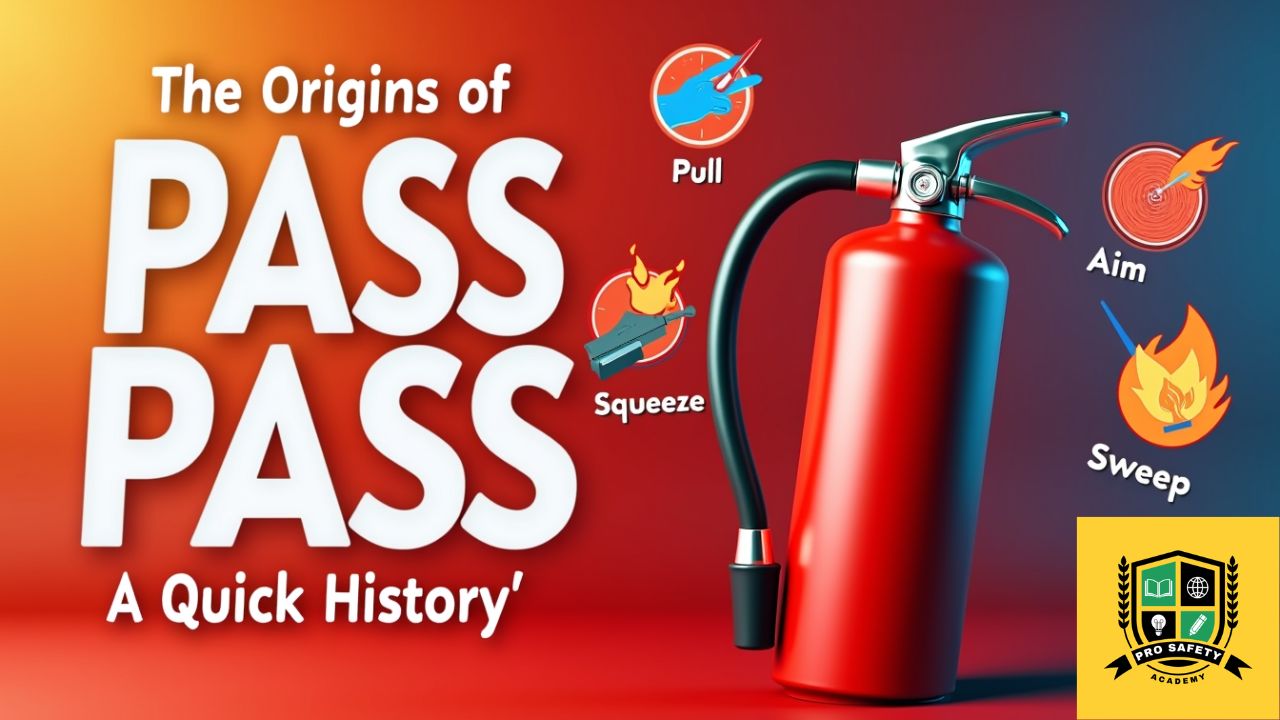The Origins of PASS: A Quick History

If you have ever wondered where the simple yet powerful PASS method came from, you are not alone. The PASS technique, which stands for Pull, Aim, Squeeze, and Sweep, was not created overnight. It was designed to make fire extinguisher use simple enough that anyone—yes, even you—could remember it in a stressful situation.
In the early days of fire extinguishers, many people froze when faced with flames, because the tools looked intimidating. Firefighters and safety trainers realized they needed a universal approach, a friendly four-step process that anyone could follow without confusion. That’s how the PASS method was born.
The beauty of PASS lies in its simplicity, and history shows that keeping instructions short and clear helps people act faster. Fire safety experts tested different teaching methods, but PASS stood out because it was memorable. Imagine trying to remember complicated instructions while your kitchen curtains are on fire—it simply wouldn’t work. PASS condensed everything down into a practical formula, making fire extinguishers far less scary and much more user-friendly.
Breaking Down the PASS Steps Clearly
Let’s break down how PASS Works: Fire Extinguisher safety into four small steps that feel as natural as making coffee.
First, Pull the pin. Think of it like unsealing a new packet of chips—you need to open it before you enjoy it. Without pulling the pin, the extinguisher is locked and won’t spray.
Next comes Aim. You don’t just point randomly at the flames; you aim at the base where the fire is actually feeding. If you’ve ever tried watering plants, you know spraying the leaves won’t help—they need water at the roots. Fires work the same way; you must go to the source.
Then, you Squeeze the handle. This is the moment when the extinguisher finally releases its magic. The harder you squeeze, the more pressure you release, and that means more power to fight the fire. It’s not about strength, but about commitment.
Finally, Sweep the nozzle side to side. Imagine you are cleaning crumbs off a table, only this time you are sweeping away flames. The motion ensures the fire doesn’t reignite in a hidden corner, giving you better control. When you put all four steps together, PASS is like a well-rehearsed dance move—simple, quick, and highly effective.
Common Mistakes People Make With PASS
Even though PASS Works: Fire Extinguisher safety is straightforward, people still make mistakes when panic sets in. One common slip-up is forgetting to pull the pin, which makes the extinguisher useless until you do it. Another mistake is aiming too high, where the flames look dramatic, but the fire source remains untouched. It’s like trying to fix a leaky faucet by wiping the water on the floor—it looks helpful, but it solves nothing.
Some people also forget the “sweep” part, spraying in one spot as if the fire will politely stay put. Fires don’t behave that way; they spread, and you need to cover all the ground they might reach. Another frequent error is standing too close.
Yes, you want to fight the fire, but getting dangerously close could put you at risk. The ideal distance is usually six to eight feet away, which allows the extinguisher spray to spread effectively while keeping you safe.
Finally, people sometimes panic and hold down the handle too early, wasting the extinguisher before aiming correctly. A fire extinguisher doesn’t last forever—it gives you only a few crucial seconds. That’s why being calm and following PASS in the right order matters so much.
Why PASS Saves Lives in Real Emergencies
Here’s the truth: PASS Works: Fire Extinguisher safety because it’s built for real emergencies, not just classroom training. When flames suddenly appear, your brain doesn’t want to process a long manual; it wants something short and familiar.
PASS gives you that quick mental shortcut. You don’t need special training or superhero powers—you just need those four steps.
In countless real-life incidents, people have stopped small fires from becoming disasters by using PASS correctly. Kitchen fires, office mishaps, and even car engine sparks have been contained because someone remembered to Pull, Aim, Squeeze, and Sweep.
PASS works because it strips away overthinking and replaces it with action. When every second matters, action is what saves lives.
PASS also gives you confidence. Knowing you can use a fire extinguisher properly turns fear into control, and that control can protect not just you but also everyone around you.
The technique is not about being perfect—it’s about being effective when it counts the most. And that’s why PASS is taught worldwide, from schools to workplaces, as the go-to method for extinguisher safety.
Final Thoughts
When it comes to fire safety, PASS is proof that the simplest solutions are often the most powerful. It’s short, it’s memorable, and it works under pressure. Next time you see a fire extinguisher on the wall, don’t just walk past it—remind yourself of the four steps. Because when the unexpected happens, knowing PASS Works: Fire Extinguisher safety could make all the difference.

